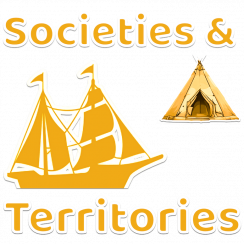Countless Indigenous peoples were involved in the fur trade in 1745, including the domiciled Iroquoians, the Huron-Petun of the Great Lakes and the Iroquois Six Nations or Haudenosaunee (Note: after 1722 The Tuscarora joined as sixth nation] . The Haudenosaunee mostly traded with the English colonies while the other groups did most of their trade with French merchants. Some Indigenous men were trappers, while others were traders or voyagers working for European merchants.
Farming was still important to the Iroquoian language family. The Huron, however, ran into a serious problem when they settled at Jeune-Lorette (Wendake). The Huron had been famous for their farming when they had been living in the Great Lakes Region, but now they were confronted with land that was much less fertile. Since the land was less conducive to farming, hunting became increasingly important to them. Hunting was an essential activity for the other Iroquoian groups, too. They sometimes left their villages for long periods of time to go hunting either to meet their own needs or for the fur trade.
There were also Indigenous people who worked the land for the French colonists. Still others sold the goods they made, such as canoes, or the products of their hunting or farming. They would go to towns like Montréal and Quebec to sell these goods and products.
Author: Service national du Récit de l’univers social
[Notes: The Tuscarora were accepted in 1722 as the Sixth Nation of the Iroquois ConfederacyThis is a group of people or nations or tribes or provinces that form an "alliance". The agreement they make allows each member to control itself, but they agree to work together for common causes. Also known as a confederation or sometimes a league. More, or Haudenosaunee.]
<h3>Quickly check your knowledge:</h3>


